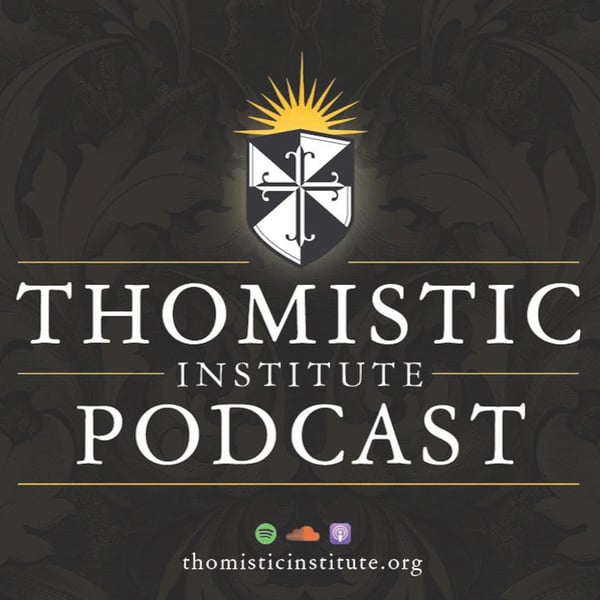Should We Legalize Physician-Assisted Suicide? | Prof. John Keown and Dr. Joseph Marine
The Thomistic Institute
The Thomistic Institute
4.8 • 729 Ratings
🗓️ 2 May 2020
⏱️ 48 minutes
🧾️ Download transcript
Summary
This lecture was given at Johns Hopkins University on February 17, 2020.
For more events and info please visit thomisticinstitute.org/events-1.
Dr. John Keown is the Rose F. Kennedy Professor of Christian Ethics in the Kennedy Institute of Ethics. He graduated in law from Cambridge and took a doctorate in law at Oxford, after which he was called to the Bar of England and Wales (Middle Temple). After a spell teaching medical and criminal law at the University of Leicester, he became the first holder of a lectureship in the law and ethics of medicine at Cambridge, where he was elected to a Fellowship at Queens' College and, later, a Senior Research Fellowship at Churchill College. In 2015 he was made a Doctor of Civil Law by the University of Oxford in recognition of his contribution to law and bioethics.
He has published widely in the law and ethics of medicine, specializing in issues at the beginning and end of life. The second and heavily revised edition of his widely acclaimed book Euthanasia, Ethics and Public Policy: An Argument Against Legalisation was published by Cambridge University Press in 2018. His research has been cited by distinguished bodies worldwide.
Joseph Marine, MD, MBA, FACC, FHRS, is a board-certified clinical cardiac electrophysiologist who practices primarily at the Johns Hopkins Hospital in Baltimore, Maryland. He is an Associate Professor of Medicine at the Johns Hopkins University School of Medicine and holds appointments as Vice-Director of the Division of Cardiology and Section Chief of Cardiology for Johns Hopkins Community Physicians. He trained at UC San Francisco Medical School, Brigham and Women’s Hospital/Harvard Medical School, Boston University Medical Center, and Beth Israel Deaconess Medical Center.
Dr. Marine has lectured widely on a variety of arrhythmia topics and has served as a co-director of the American College of Cardiology (ACC) Cardiovascular Overview and Board Review Course for 10 years.
Transcript
Click on a timestamp to play from that location
| 0:00.0 | definition. So what we're talking about is the active intentional ending of a patient's life. |
| 0:05.0 | And the concept of intention is clear. Crucially sit the doctor's purpose to end the patient's life. |
| 0:11.0 | So we're not talking about palliative care or adopt feminists, palliative drugs, in order to use pain, |
| 0:17.0 | and where the shortening of life may be foreseeable. |
| 0:22.6 | We're talking about the intention of ending by physician, not by relative, the current |
| 0:27.0 | debate is should we legalize lethal injections by a physician because death is thought to benefit |
| 0:32.9 | the patient. |
| 0:33.8 | That's the heart of disease. |
| 0:36.1 | This is a good death of a patient, typically because the patient's suffering and wants to end their life. |
| 0:41.8 | So we're not talking about selfish killings by doctors or other people. So I'm going to refer to euthanasia, which is generally as lethal injections. |
| 0:49.3 | That's what I'm talking about, intentional, active steps to end the patient's life. |
| 1:00.5 | The debates about active euthanasia around the world should be illegalized lethal injections, |
| 1:05.4 | but it's also worth mentioning that it's possible intention to kill a patient by deliberate omission. |
| 1:11.6 | You can intention a hasten the patient step by withholding or withdrawal treatment or tube feeding. And the vast majority of cases where treatments or tube feedings are repelled, this is not the doctor's |
| 1:16.6 | intention, so they're not cases of euthanasia, they're just cessation of what's regarded as futile |
| 1:22.6 | treatment or the treatments become excessively burdens. And that's why it's being repelled or withdrawn. |
| 1:28.3 | I think it's important to note that it is conceptually and practically possible for |
| 1:33.3 | passive euthanasia to take place so we shouldn't forget it. |
| 1:36.3 | But the focus of my remarks today is that lethal and gentleness. |
| 1:41.3 | We can suddenly divide euthanasia into voluntary, non-voluntary and involuntary. |
| 1:45.0 | Voluntary Euthanasia, via voluntary active euthanasia, is where a lethal injection is requested by a competent patient. |
| 1:53.0 | Non-voluntary active euthanasia is euthanasia of an incompetent patient, like a baby or a patient with that's dementia. |
... |
Please login to see the full transcript.
Disclaimer: The podcast and artwork embedded on this page are from The Thomistic Institute, and are the property of its owner and not affiliated with or endorsed by Tapesearch.
Generated transcripts are the property of The Thomistic Institute and are distributed freely under the Fair Use doctrine. Transcripts generated by Tapesearch are not guaranteed to be accurate.
Copyright © Tapesearch 2025.

